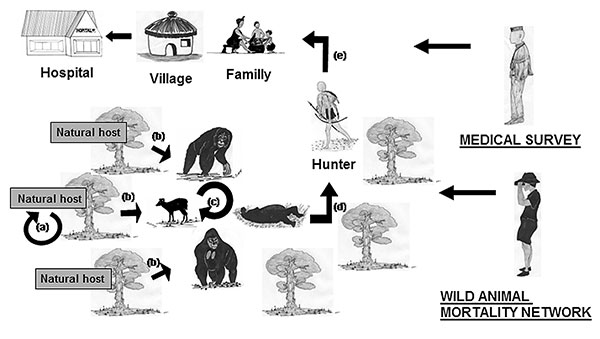Volume 11, Number 2—February 2005
Research
Wild Animal Mortality Monitoring and Human Ebola Outbreaks, Gabon and Republic of Congo, 2001–2003
Figure 6

Figure 6. Schematic representation of the Ebola cycle in the equatorial forest and proposed strategy to avoid Ebola virus transmission to humans and its subsequent human-human propagation. Ebola virus replication in the natural host (a). Wild animal infection by the natural host(s) (b), no doubt the main source of infection. Wild animal infection by contact with live or dead wild animals (c). This scenario would play a marginal role. Infection of hunters by manipulation of infected wild animal carcasses or sick animals (d). Three animal species are known to be sensitive to Ebola virus and to act as sources of human outbreaks, gorillas, chimpanzees, and duikers. Person-to-person transmission from hunters to their family and then to hospital workers (e). The wild animal mortality surveillance network can predict and might prevent human outbreaks. Medical surveillance can prevent Ebola virus propagation in the human population.